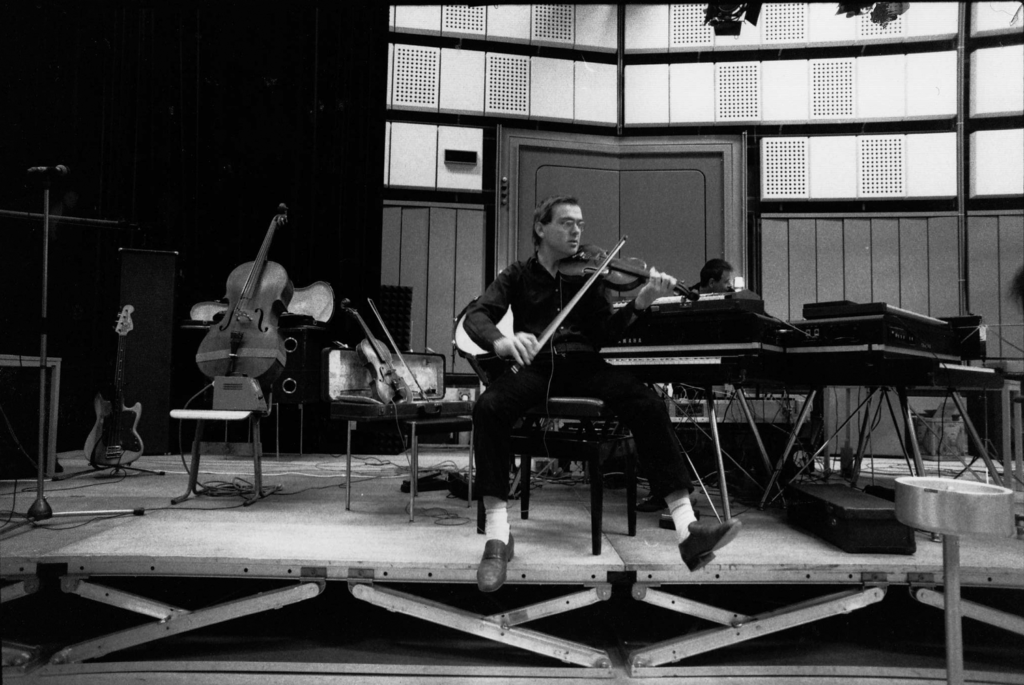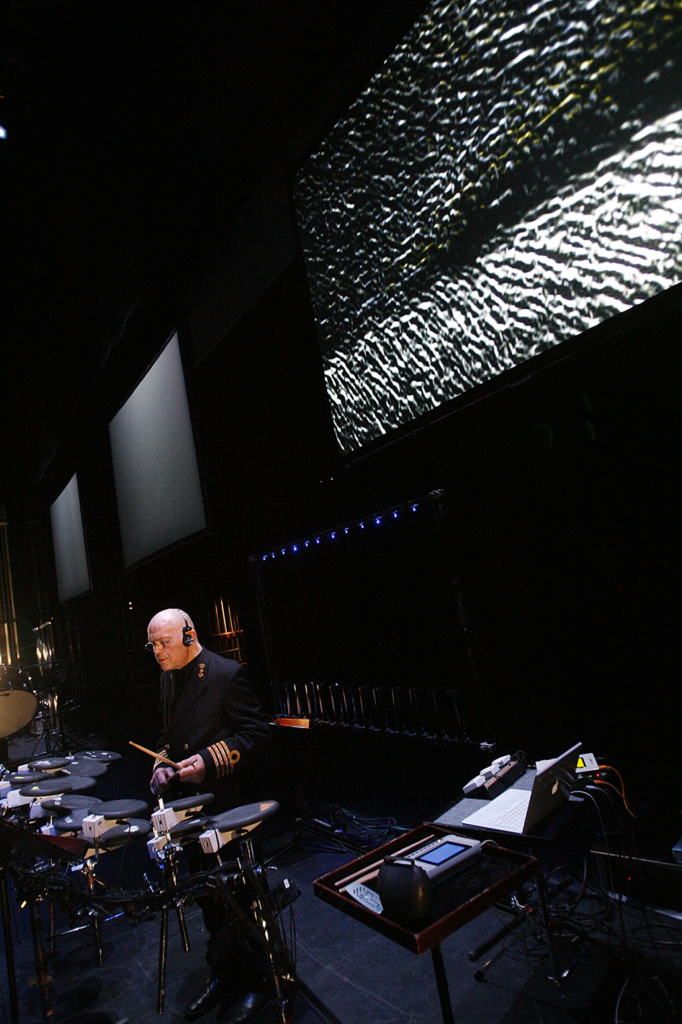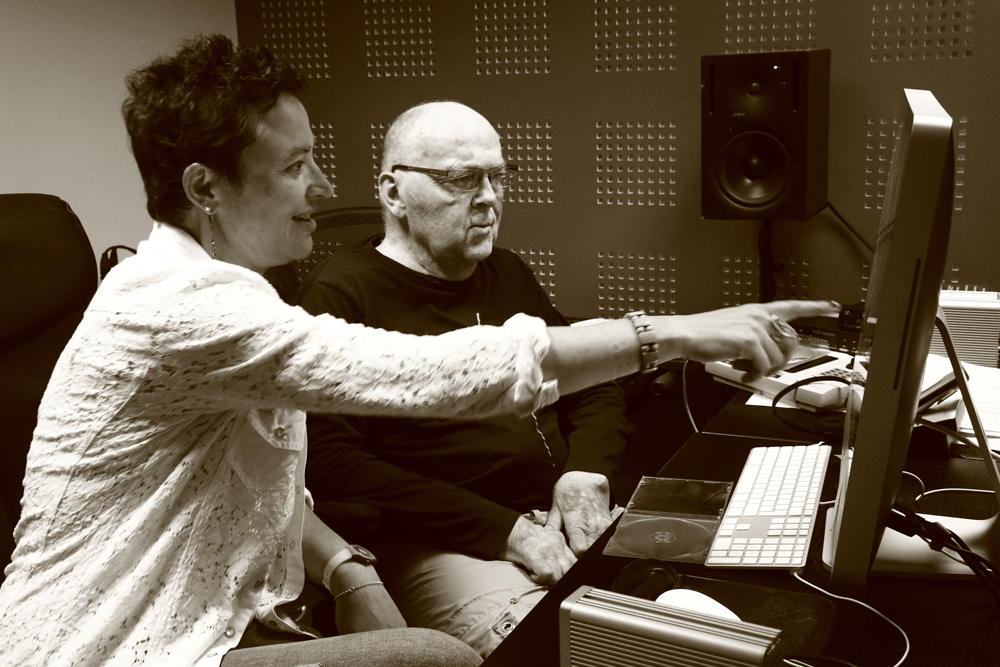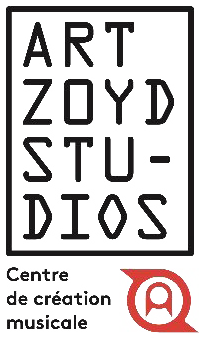-----------------------
ART ZOYD STUDIOS, back to basics
GÉRARD HOURBETTE (1953-2018)
-----------------------
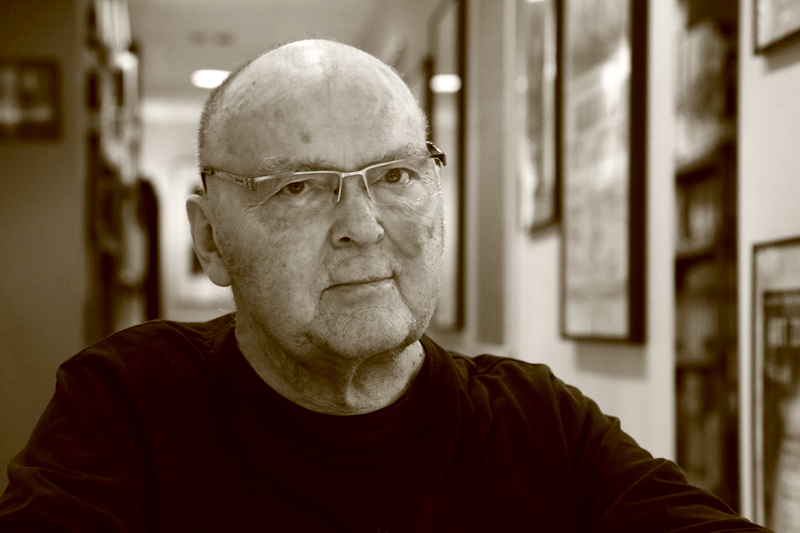
A major figure in the musical avant-garde, Gérard Hourbette's writing and commitment have contributed to the renewal of musical writing and the instrumental approach.
Trained as a violinist, electroacoustician and tireless composer, Gérard Hourbette, influenced by the works of contemporary composers Iannis Xenakis, Pierre Henry, Karlheinz Stockhausen and Luciano Berio, has opened the way to unsuspected forms of writing, the result of sampling, works steeped in hybridization of sources, made up of natural and industrial sounds, at the crossroads of the performing and visual arts. The richness of his works opens onto a poetic soundscape, a musical architecture with solid foundations.
A writer and poet, his Écrits(la Pensée universelle, Paris, 1988) deliver a dazzling thought that traces a path, a long road of constant travel towards elsewhere, letting the elements of nature, the wind, colors and sensations shake us, inviting us to palpate life, the world of images and the territory of the invisible.
His writing was a breath of fresh air, rooted in fantasy and science fiction (Philip K. Dick), a strangeness grappling with wry humor. The artist often claimed to work on the "edge of dreams or death", questioning the absurd, a ruse that enabled him to sublimate the tragic and outwit the trappings of pain and illness.
In 1971, together with Thierry Zaboitzeff, he joined the progressive rock group Art zoyd, founded in 1969 by Rocco Fernandez. Until 1997, he and composer Thierry Zaboitzeff formed a fantastic musical duo, composing Berlin, Phase IV, le Mariage du Ciel et de l'enfer, Symphonie pour le jour où brûleront les citésamong others. These albums have become benchmarks in their own right.
Under the impetus of Gérard Hourbette in particular, the group turned towards new musical research, becoming a "flagship group" of "new music", traveling on the frontiers of highly written experimental instrumental music and ambitious, creative contemporary electroacoustic music (Cf. Dangereuses Visions with the Orchestre National de Lille, the Mexico and Vienna Orchestras in the 2000s). In 1999, he created the Centre Transfrontalier de Production et de Création Musicale.
With Art Zoyd, Gérard Hourbette contributed to the renewal of the approach to ciné-concert. The creations of Faust, Nosferatu by F. W. Murnau, Häxan by Benjamin Christensen (last ciné concert, composed with Thierry Zaboitzeff), The Fall of the House of Usher by Jean Epstein, Fritz Lang's Metropolis, all involved dusting off the form, overcoming the shackles of a writing style that proscribed illustration and redundancy between images and sound at all costs. He thus emphasized orchestral playing and an organic yet subtle relationship with the stage. Of particular note are creations with Groupe F pyrotechnicians for audiences of hundreds of thousands, and creations for choreographers Roland Petit (The Marriage of Heaven and Hell for the Milan Scala Festival in 1984) and Karole Armitage for Shrödinger's Cat in 2001. Created for the Ballet de Lorraine, the show toured the world after an exceptional run at the Théâtre National de Chaillot.
The large number of works and their wide audience (Europe, Japan, United States, Australia, Mexico, etc.), The New York Times will make 44 1/2, a collection of 12 CDs and 2 DVDs released on the American label Cuneiform, retracing an adventure spanning more than 40 years of new works and live concerts, one of the best box sets of 2017, testifies to this worldwide recognition and to the originality of an approach built on dialogue with other renowned artists, performers and composers.
Artistic director of this musical creation laboratory, Gérard Hourbette was also a true "passeur", a humanist, concerned with pedagogy and attentive to the transmission of writing, the accompaniment of young artists and experimentation.
He succeeded in making the Studios Art Zoyd, based in Valenciennes in the Hauts-de-France region, a unique place dedicated to residencies, a permanent center for musical creation, a space for the gestation of works and training in the art of composition, with a constant eye to writing at the frontiers of other artistic disciplines.
Art Zoyd Studios has welcomed over 180 composers and artists in residence, developed a wide range of original educational initiatives, and set up a record label and repertoire (in-possible records) not only reissuing the group's works, but also recording compositions commissioned from artists in residence.
Gérard Hourbette's latest creations, attentive to contemporary technological mutations (Armageddon - Operetta for Robots), for example, a collection of works for virtual reality headsets based on the world of Dante(Immersion Dante - 2017 / 2020), hybridization of instruments and humans, and sound installations, open up real and stimulating perspectives on our relationship with images(Trois Rêves non valides, multimedia show), a mirror that gives a glimpse of a thrilling inner life that the artist, with mischievous humanity, has never ceased to put into sound and music.
The box Phase V is an undeniable reference to the 1982 double album Phase IV, which marked a turning point in Art Zoyd's aesthetic.
Phase Vover six hours of music to be listened to at high volume and in the dark, will mark a radical change in the group's recent mixed (electronic and instrumental) aesthetic, offering more acousmatic and electronic music, as well as sonic, harmonic and rhythmic trajectories.
It's worth noting that Gérard Hourbette's project was for a show without performers, where music would be king, pure and radical, with images, spaces and dancers. In-Ferno, whose title is La Joyeuse utopie des lutins de Madagascar, explores new forms of storytelling. "Each scene of the opera is chosen at random, and determined by the audience's choice thanks to an interactive device recording the direction the audience wishes to take, mostly within a virtual space. To this end, each scene is the projection of a game on a large screen, in which the audience chooses a door, an abyss, a lake, a river, a cave, all of which inevitably take them inside the opera...
The aim of this project was to invent or perpetuate (reinforce) a new form of live art, between interactive virtual spaces, live music and artificial or pre-recorded voices, active sound spatialization, live performance between extras - ghosts, musicians, moved objects, light and shadow.
Finally, the challenge was to test just how brutal, violent and extreme the art of sound (music) can be.
This posed the problem of the audience: "Is there still an audience for music when it goes beyond the norms of propriety and comfort? And which audience? Where?"
